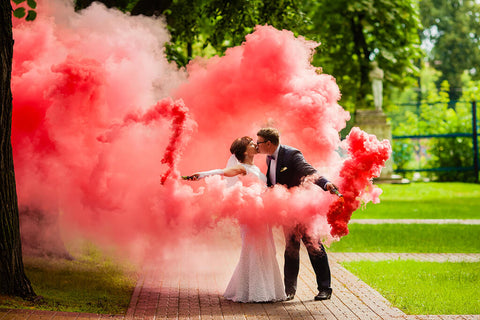-
Lightroom Presets
- Mobile Presets
-
Photoshop
-
Learn
-
Support
-
Install
- Best Sellers
- Blog
By Amanda Padgett on | No Comments

Anyone who has ever picked up a camera and taken family or group photos has had to deal with closed eyes, turned heads, unwanted expressions, and other things that can cause a great image to be so-so or even find its way to the trash can.
However, if you use Photoshop, you can SAVE the image with a Head Swap (also sometimes referred to as a Face Swap). Swapping or replacing heads is when you take two (or more) photos and then copy and move the"good head" from one image onto the image with the “bad head.”
There are multiple ways to do a head swap in Photoshop, but here is how I do it, and hopefully, this step-by-step guide will prove helpful to you too!
Note: Photoshop Elements Users – this tutorial will work for you, too!

In Photoshop, start by opening the two images you will be using (the image with the "bad head" that needs replacing and the image with the "good head" that you are going to use as a replacement). Hopefully, your image will require just one head swap, but you can use these steps for as many heads as you need to fix.
In my example image, I want to fix the bride's slightly closed eyes, using the head from another, very similar photo in which the bride's eyes are just perfect.

Once your images are open, select the Lasso Tool and use it to circle the “good head,” and then press Photoshop keyboard shortcut CTRL and "J" (PC users) or CMD and "J" (Mac users). This will copy just the head (what you have circled) onto a separate layer all by itself.

To make this process easier, you will probably want to change your workspace so that you can see all your windows/images on the screen simultaneously. To do this, go to Window>Arrange in your Main Menu and click on Tile All Vertically.
Once you are done with your head swap, if you want to switch back to having your images in tabs, go to Window>Arrange>Consolidate All to Tabs to get back to that view.

Click on the image/file name with the “good head" and DRAG that layer from the layers panel onto the image with the "bad head." Make sure you ONLY DRAG THE NEW LAYER you just created and NOT THE BACKGROUND LAYER.

Once the "good head" is on the right image, select your Move Tool (shortcut: tap "V" on the keyboard) and place it over the "bad" head that you want to replace.
You might have to turn the "good head" a bit. If you do, click on the corner of the layer to turn it. And It may also be helpful to reduce the opacity of the layer while you are positioning it so that you can line it up properly with the image below.
Once satisfied with the placement, click "Enter" to commit your selection to that spot.

If that person has moved or turned at all, you will have a much easier time achieving a good "head swap" by adding a layer mask, inverting it, and then ONLY letting the eyes (and sometimes nose and mouth) show through.
To add a layer mask to your head layer, press the icon at the bottom of the Layers panel that looks like a white rectangle with a small gray dot inside. Next, press CTRL and "I" {PC users) or CMD and "I" (Mac users) to change the layer mask you just added from white to black. This will make it so you can't see the new layer you just added - don't stress about that (we will bring back the portions we want in the next step)!

Now, you will want to bring back the desired areas from your "good head" layer, so only those areas appear on your image by using a white brush at 100% opacity to brush over the eyes/nose/mouth area as needed.
To select the Brush Tool, tap "B" on your keyboard. Make sure you are brushing with white by checking that white is set as your foreground color. If white isn't your foreground color, tap "D" on your keyboard to change the selections to their "default" colors of black and white, and then tap the "X" key to make white the foreground color.

In the finished example below, I only brushed over the eye area to replace just the eyes on the problem image.
At this point, make sure to save your image by clicking on CTRL and "S" (PC users) or CMD and "S" (Mac users), and then you can continue with another head swap or any additional Photoshop edits you need to make.

Some head swaps are easier than others. The easiest ones will be similar to my tutorial image, where the subjects are in the exact same pose and location, but one individual has blinked or wasn't smiling. These will always look the most realistic, and no one will be able to tell that you did a head swap.
More difficult head swaps happen when the subject's head is turned or in a different position in the photo (but the location remains the same). These can still be realistic but will take more work and may require using the clone stamp tool and more careful brushing on your layer mask.
The most complex and least realistic head swaps are when you take a person's head from an image taken at a different place and time and insert it into an entirely different photo. While this can be done, if the lighting or location isn't just right, it can end up being quite obvious that the head has been moved or adjusted.
Do you have any questions or comments about How to Do a Head Swap in Photoshop? Just leave us a comment below - we would LOVE to hear from you! And PLEASE SHARE this post using the social sharing buttons (we really appreciate it)!




Hi! I'm Amanda, a homeschooling mom of four, from South Carolina. I am passionate about photography, photo editing, and helping others learn to love their camera and editing programs.

Comments